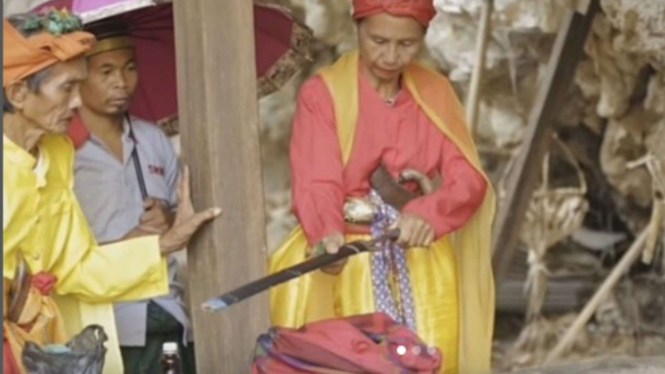Five Indonesian Tribes Have a Tradition of Wandering
- Tangkapan Layar
VIVA – Wander is an activity of a person's journey to a certain place with a specific purpose such as for work and education reasons.
Many factors drive people to leave their place of origin or birth to go to another place. Among them are the traditional or cultural factors of an ethnic group, and there are also economic, educational, and war factors.
It turns out, there are several tribes in Indonesia who like to wander. In fact, wandering has become a tradition or culture that has been handed down by their ancestors for hundreds of years and until now.
Well, here are Indonesian tribes who have a tradition of wandering.
1. Minangkabau tribe
Rumah Adat Gandang Minangkabau
- vstory
It turns out, the origin of the word Wander or local people known as "Merantau" comes from the Minangkabau language and culture, namely "Overseas". Initially, Rantau meant areas outside the Minangkabau core.
The activities of people from the core region to the outer region are called "Marantau" or going to the overseas region. It took a long time to wake up when overseas became Minangkabau territory.
A Minangkabau man when he reached the age of a young adult (20 to 30 years) had gone abroad by the Minangkabau traditional culture adopted by the tribe, estimated to have been around the 7th century.
2. Bugis
Tradisi angkat rumah panggung di masyarakat Suku Bugis.
- VIVA.co.id/Irfan
The Bugis tribe is also a tribe that likes to wander. Bugis-Makassar wander has been intense since the defeat of the Kingdom of Gowa against the Dutch which ended with the Bongaya Agreement in 1667 which felt very binding and insulting to the Bugis-Makassarese.
After the defeat of the Dutch and the feeling of being oppressed by the Bongaya Agreement, the independent Bugis-Makassar people also scattered to leave their homeland. By ship they wandered to other areas in the archipelago, even to a number of other countries.
3. Banjar Tribe
The land of origin of the Banjar Tribe is in South Kalimantan, but we can find descendants of the Banjar Tribe in significant numbers in some areas, such as Central Kalimantan, East Kalimantan, Riau, Jambi, North Sumatra, East Java, and even abroad such as in Malaysia, Singapore and Brunei.
The activity of wandering Banjar people has been going on for hundreds of years, even several years ago. Their descendants also thrive in the areas mentioned above. Overseas, their identity can still be known as the overseas Banjar people.
Wandering to Kalimantan Island, not only by the Banjar Tribe. However, far from the previous year, the neighbor of the Banjar Tribe, the proto-human Dayak Maanyan, is thought to have migrated to Madagascar island.
4. Bawean Tribe
Suku Bawean.
- U-Report
The Bawean tribe has a hometown on a small island, namely Bawean Island, in the middle of the vast sea between two large islands, namely Kalimantan and Java.
People in the Bawean Tribe have usually migrated to Malaysia since the 19th century. In Malaysia, they are known more as the Boyan people. Although the number of nomads is not too many, it can be categorized that the Bawean people have been wandering for a long time.
5. Batak Tribe
Orang Batak.
- U-Report
The Batak Tribe are among those who later carry out wandering activities. The tradition of wandering in this tribe has only been around for more than a year, namely the 19th and 20th centuries, but it has been going on very intensely lately. Even now almost the entire archipelago already has people from the Batak Tribe.
The motive for wandering the Toba Batak people is contained in their philosophy of life, namely Hagabeon, Hasangapon, Habontaron, and Harajaon.
For people from the Batak Tribe, wandering has the purpose to achieve a better life, trying to survive in a new life outside their hometown.

































